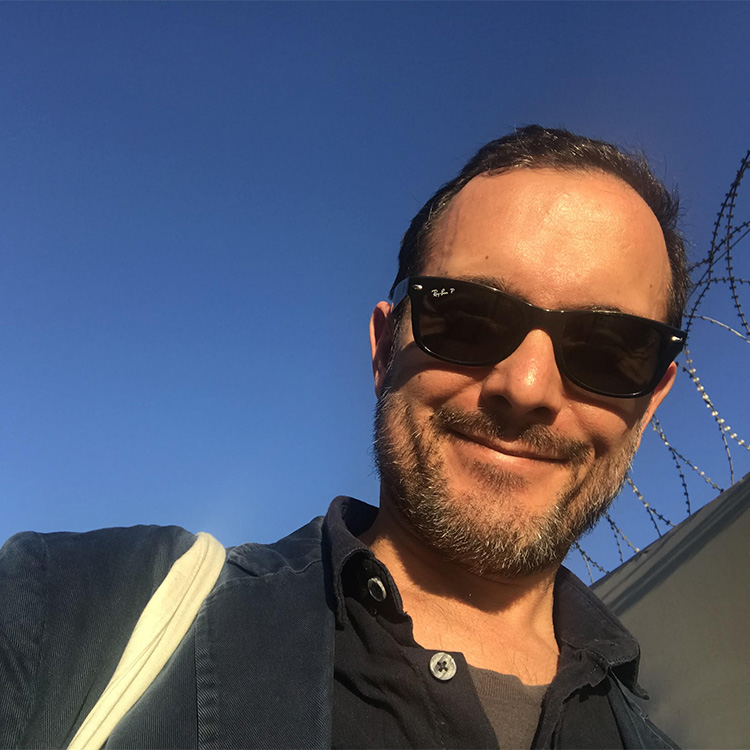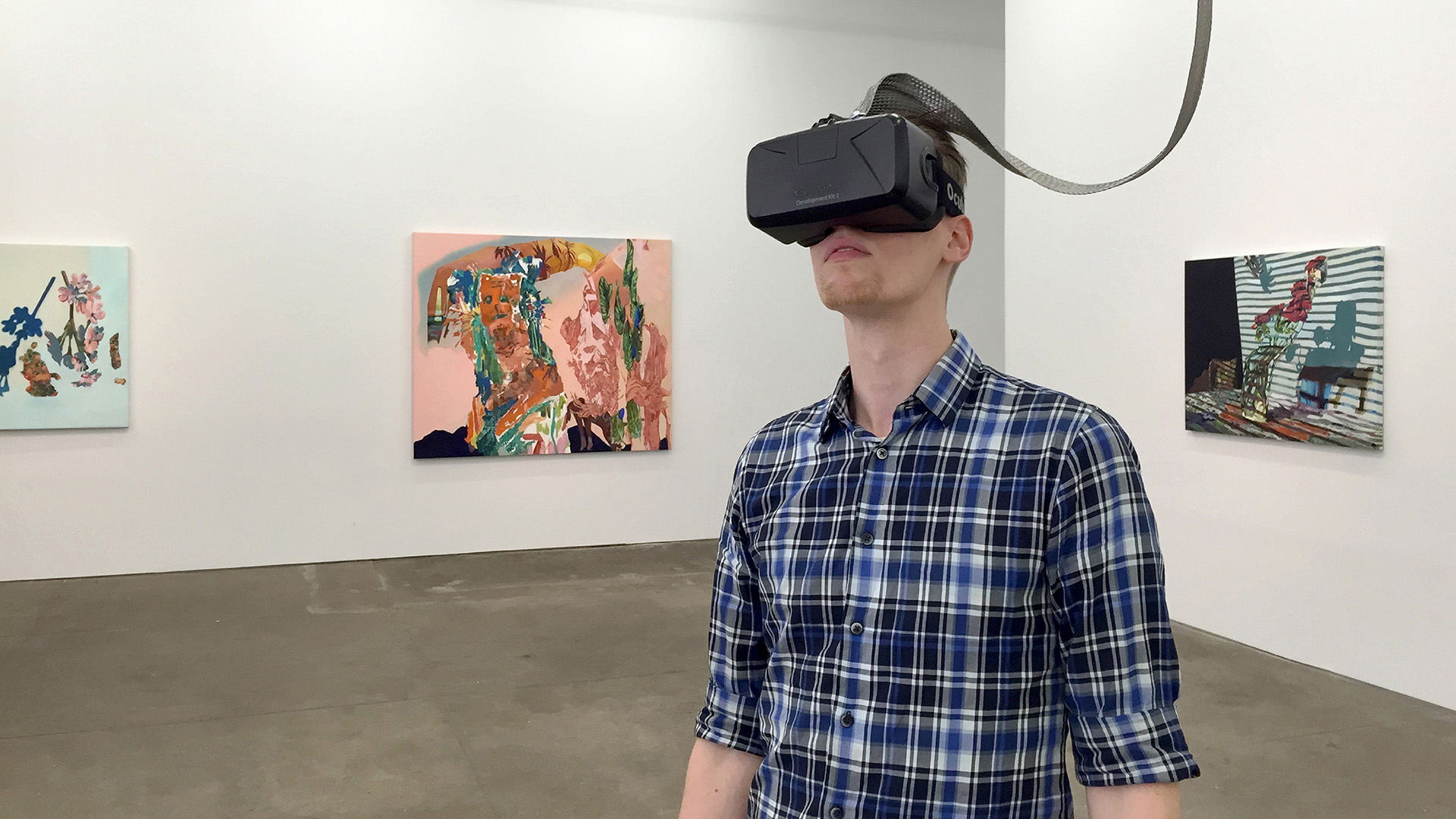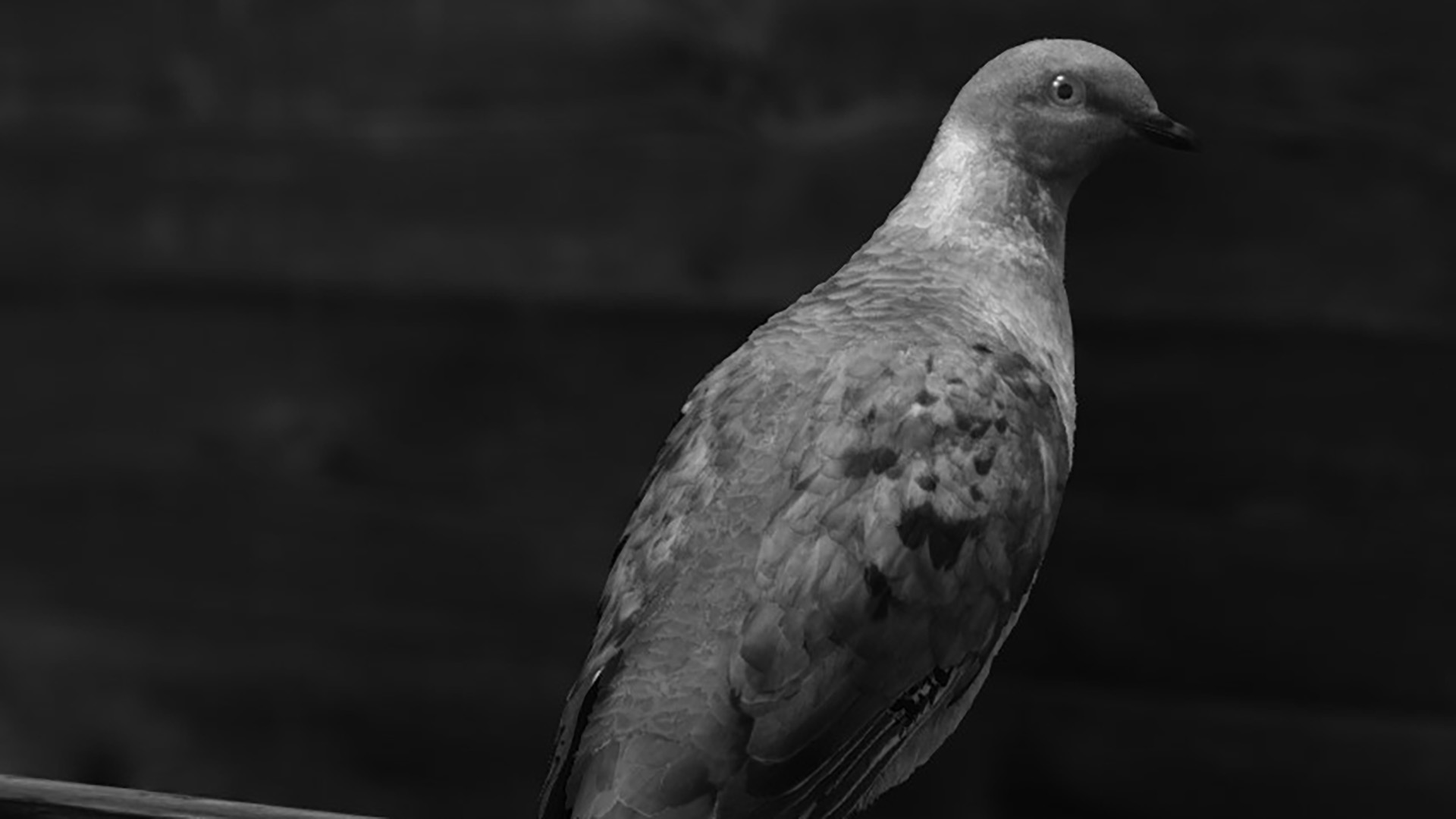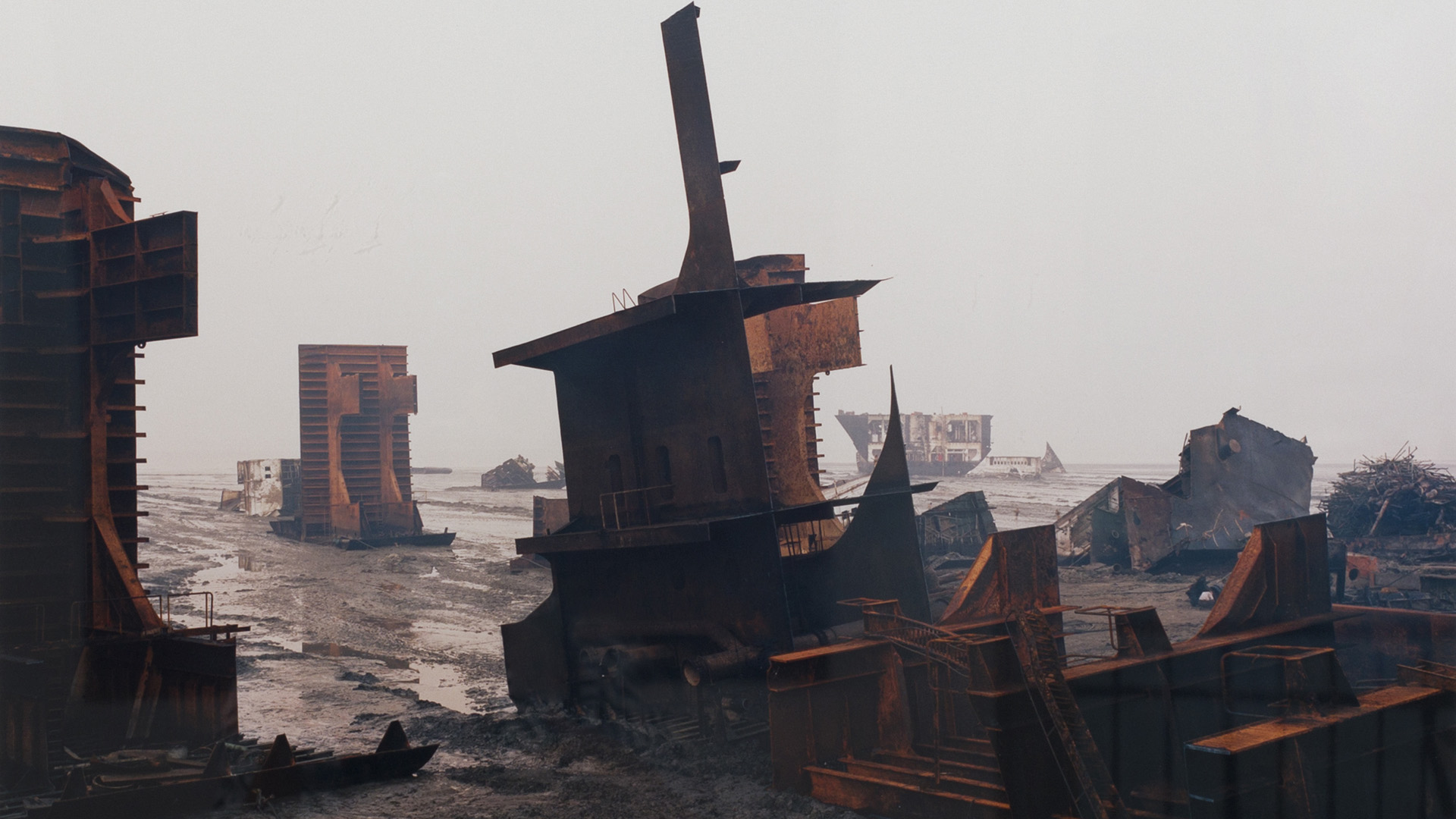Blog
Thoughts on Metaverse
28 February 2022 Mon
Evrim Altuğ focuses on the debates surrounding metaverse in his new article.

EVRİM ALTUĞ
evrimaltug@gmail.com
When I got the offer to write a text this month on metaverse for Borusan Contemporary Blog, my first reaction was to look for the origin of this word/phenomenon. In today’s half virtual world, we are already got used to concepts like metaphysics, metainformation and metadata. Metaverse itself is a synthesis of the words, meta and universe. We are familiar with this popular term which takes on the meaning of “vast multi universe” in astronomy. It is said that the term was first articulated by American science-fiction writer Neal Stephenson in his novel titled Snow Crash in 1992. The name of the book references the moment when an outdated Macintosh informs its user with a simple graphic image of a broken TV after it is partially crashed. The novel of Stephenson takes place in an imaginary 21st century Los Angeles, which became an autonomous federation. The atmosphere of the narrative evokes Blade Runner (1983) and Blade Runner 2049 (2017) which were adaptations of Philip K. Dick’s dystopian short detective story with androids. Snow Crash reflects the interdisciplinary interests of Stephenson, whose multilayered work covers elements borrowed from numerous fields like cryptography, anthropology, linguistics, politics, history and religion. Regarding from this perspective and also keeping in mind the fact that it was written in 1992, the book and the term it referenced remind many works in arts and culture produced until now. For example, War Games (2013) was about the afterwards of a contact between a small hacker kid and a national digital defense network computer which mistakes a virtual war with a real one. Besides, Tron legend in sequels were narrating the half virtual and fatal struggle going on in an alternative world and of course The Matrix series was taking place in an alternative digital universe. We also still await the sequel of Avatar impatiently. All these examples and many others are already favorite reference sources for popular culture and sociology texts. After all, when we consider the possibilities of individual experiences and availability of this notion, it is possible to mention Sim City computer game and phenomena like Tamagotchi and Pokémon which caused a craze of consumption and wonder in 1980s and 1990s, as well as heralded this concept-action having a configuration of simulation.

Rachel Rossin, I Came and Went as a Ghost Hand (Cycle 1), 2015.
Rachel Rossin’s work at the Borusan Contemporary Art Collection exhibition in 2017 could be experienced with virtual reality headsets. As metaverse gets more widespread these digital gadgets become more popular too.
Of course, we may assume that this notion refers to political and legal property with the connotations of the word meta in Turkish and it is also unsurprisingly a favorite for digital capitalism. Metaverse has in sights not only the present world but also the afterworld by promising us a reunion with what we had lost, and it cultivates itself by a cold-blooded manner through these promises. When we want to investigate the actions and the truth encompassed by metaverse under a magnifying glass, we come up with many areas of debate including kinship relations in this universe, perception of community, internationalism, crime, participatory economics coupled with ecology and of course art.
First of all, when we approach this issue with a Darwinist view and mode of existence, through an evolutionist understanding and by a reference to its contained sub version of Web 3.0, metaverse foreshadows us what we are going through right now is neither the first nor the last. The fact that the designers of Second Life—first released in 2003—computer game were also inspired by Neal Stephenson’s novel and the truth assumed by this novel is an indication of my previous statement. In that regard, we should also name the virtual “survival” game Minecraft bought by Microsoft in 2014.
Surely, the user-participant needs certain minimal quality digital tools and subsequently electricity, high technology and the economic costs of all of these in order to exist in this universe. Thus, we are talking about a notion inclined to oblige precise requirements regarding some minimal assumptions of social class, a secure internet base, and an infrastructure with specific versions of software and hardware.
With the standards it requires, metaverse arouse suspicion that swings between destruction and idealism as well as creativity and vested interest even before you choose to be a part of it. In today’s world, entering “there” compels you to become a member of a technological and economic class at a certain level. As soon as you become a part in this universe, the illusions about who owns whom or what indeed, already mischievously controls you. Like in the “Big Brother” in George Orwell’s 1984 or in “HAL 9000” supercomputer mentioned by Arthur C. Clarke in 2001 A Space Odyssey who knows who holds the reins of metaverse?

Marina Zurkow, Mesocosm (Times Square, New York), 2014.
Custom Software-Driven Hand-Drawn Animation 146-Hour Cycle.
(24-Minute Day, 146-Hour Year) Tryptich. Color, Sound, Computer, Ed. 1/5.
Marina Zurkow used algorithms to produce her work which is included in the Borusan Contemporary Art Collection in 2014. In the meantime, algorithms became more connected with the real world and inclusive virtual platforms like metaverse are no longer a fantasy now.
I dare say an important question to be considered at this point reveals itself through the problem of good and bad intentions. Nowadays, almost every brand sufficiently manifests themselves by factors like the institutionalization of individuals through civil or official organizations, the subscription systems they generate, the formation of digital communities and their financial dependance.
At this point, any type of commodity that is presented as “in gratis” or offered freely for a certain amount of time promises a sense of belonging over copious identities and these commodities turn into extensions of a universe of which you involuntarily become the spokesperson, carrier and even dealer. In this context it is meaningful to mention Jean Baudrillard who expressed important warnings about this issue in his books Simulacra and Simulation and Conspiracy of Art as well as French philosopher Michel Foucault who worked on enlightening us on the surveillance society.
In a world in which knowledge, truth and value are already digitized under severe criticism, through many movements and manifestos born out of it, arts bring up metaverse to the agenda by various media and styles. The artists who discover themselves and their own dialectics of perception within all the academic and political layers in the history of art and humanity, present the alphabet formed by this circumstance to the public opinion with incessant solo exhibitions showcasing various series of works and discourses, and also with group exhibitions marked by their configurations serving the supra narratives of curators.
Naturally, many names draw our attention with their technical decisions in reference to the digital world encompassing virtual reality, 3D printers, web-based installations or images in this regard. When I think about the history of contemporary art in Turkey, among others I would like to mention :mentalKLİNİK who almost exhibits the multilayered stance suggesting the formal and conceptual debates offered by metaverse. In my opinion this artistic duo presents the x-ray images of social, moral, financial and cultural dimensions of today’s world in their multidisciplinary works through a critical imagery. With the same suspicion, this duo turns over the distanced positions within layers of their works to the concept of metaverse in which we are rolling around the legitimacy of its existence and absence.

Marina Zurkow, Mesocosm (Times Square, New York), 2014.
Custom Software-Driven Hand-Drawn Animation 146-Hour Cycle.
(24-Minute Day, 146-Hour Year) Tryptich. Color, Sound, Computer, Ed. 1/5.
I asked :mentalKLİNİK their opinions about the issue and they shared this note with me:
“When the real is not true enough how can art lie?
Intolerant for surprises, the structure of calculable post-truth world invites us to a fake sphere of freedom confined with limited options in the world of metaverse. The pervert, sneaky and magical structure of art becomes a mediator poking digital identity and an alchemy provoking the erotic body by opening new worlds upon its own idiosyncratic world and brimming over metaverse in an age when everybody is defined as a ‘creator’; in an age of _cyber_feudalism, double_capitalism, crypto values, double_personas, spaces with no horizon, fake liberties, framed creativity, unrestricted deep surveillance and subjects that got free of bodies.”
“Present” is also in the agenda of art philosophy as a very important concept on which art builds itself and generates new forms, expressions and debates despite refrainment. From this perspective, when we approach with suspicion the layers of time, space and value metaverse offers, as we look back, it is clearly understood that how these sentences from Walter Benjamin’s book Arcades accompany us with an immense feeling of trust:
“It is not that what is past cast its light on what is present, or what is present its light on what is past; rather, image is that wherein what has been comes together in a flash with the now to form a constellation. In other words: image is dialectics at a standstill. For while the relation of the present to the past is purely temporal, the relation what-has-been to the now is dialectical: not temporal in nature but figural. The image that is read—which is to say, the image in the now of its recognizability—bears to the highest degree the imprint of the perilous critical moment on which all reading is founded.” 1
As we see in the internet and in the world itself, facing the hegemony of (English) language laughing up in the sleeve to denial, fierce imperialism of energy for which countries set against each other, moral and legal emergency in the poor distribution of resources and that wild global exploitation of existing international labor force almost leashed by the finance world, time and the generated aesthetic experiences will show how culture and arts will be dependent on or independent from metaverse.
Thus, in many auctions art history has been imposed upon, the arts which is exposed to huge money laundering operations over its value and in a way castrated by the capital, has already started the capitalist marketing of a similar universe through a valuation paradigm called NFT. Yet, the fact that this so-called valuation is also met with suspicion makes us stealthily think that we are just at the beginning of this journey in front of our computers with the utmost possible social distance.
Likewise, the increasing number of independent artists and art collectives, artwork restitution operations pushing the colonialist history aside, diplomatic apologies or the boycott campaigns towards culture and arts institutions having ties with global trusts heralds us a genuine hope.
1- Benjamin, “Awakening” (Arcades, 462; n2a, 3)
ABOUT THE WRITER
Evrim Altuğ studied at the Marmara University Fine Arts Faculty Cinema - Television Department and Istanbul Bilge University Communication Faculty Stage and Performing Arts Department (with a scholarship); he participated in the Design Culture and Administration Certificate Program. In 2003, he was one of the founding members during the relaunching of the International Art Critics Association - AICA Turkey. Altuğ was the president of the association for two terms and is still a member of the board. He writes on arts and culture across various print and digital media, including Art Unlimited, Gazete Duvar, Hürriyet Kitap-Sanat and Arkas News. He continues the program Yolgeçen on Açık Radyo with Rahmi Öğdül and he was selected for the writers’ program launched by SAHA in 2019. He continues his journalistic work on arts and culture as part of Açık Dergi on Açık Radyo, edited by İlksen Mavituna. Altuğ has recently been appointed the director of Zilberman Gallery Istanbul.



